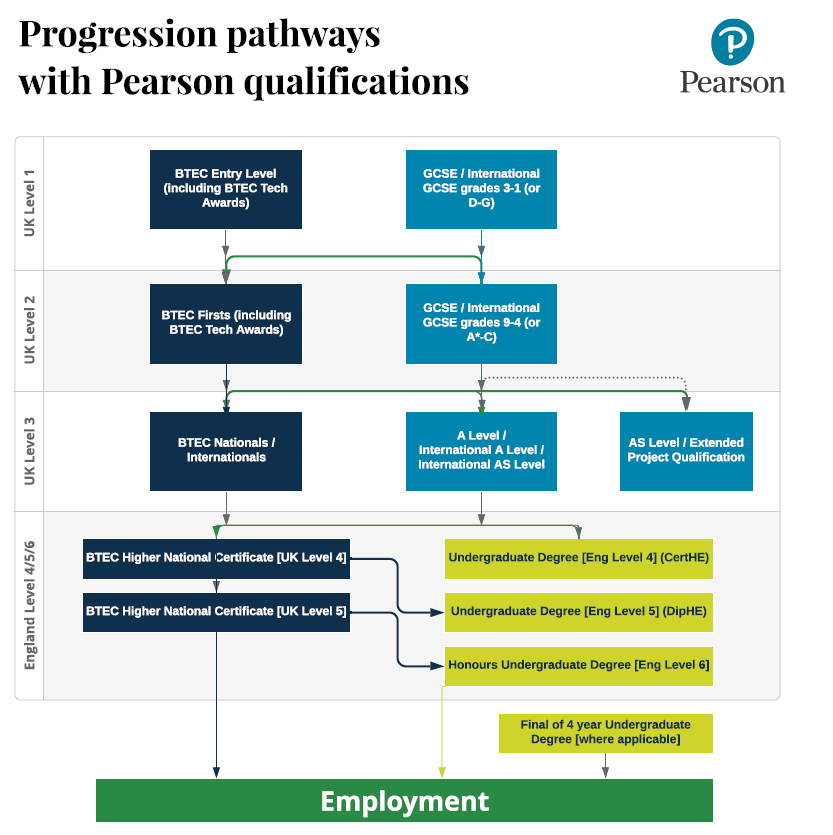
According to research, 65% of children aged 12 in 2015 will do jobs that don’t exist yet.
Pearson’s mission is to ensure that every learner can achieve their full potential and ambition through education,
so we play an important role in preparing young people for the unknown. We have future-proofed our qualifications to better serve our global learners, higher education and future employers.

Alongside recent changes to GCE A, AS levels, and GCSEs in England, our International
A levels and International GCSE credentials have been updated to respond to the evolving demands in education for our international learners. A new Future Skills for Employability framework now underpins all Edexcel qualification design enabling students
to develop and showcase employability skills while earning qualifications with academic rigour and global recognition. Our successful Level 3 Extended Project Qualification, equivalent to the AS standard, is seeing an uplift in enrollments from UK
and international learners as it develops life-long learning and project skills alongside more traditional A level and International A level study.
Widening student participation in education
Our career-focused BTEC credentials help more students access higher education. Introduced in 1984 and originally awarded by the Business and Technology Education Council, Pearson BTECs are designed and validated with valuable input from universities,
industry and professional associations.
BTEC attracts a wide variety of academically strong and non-traditional learners in the UK as they offer proven routes into leading universities, including Oxford and Cambridge. Internationally, BTEC at UK Level 3 is more in demand and we are launching
a new suite of BTEC Level 3 International qualifications designed specifically for global learners in 2020. These will prepare those with diverse backgrounds for their chosen career, whether directly or after university study.
More students than ever before take a combination of A level and BTEC in high school and the University College Admissions Service (UCAS) makes it easy for UK universities to evaluate these students fairly through their tariff point calculator.
As similar tariff points are allocated to comparable qualifications and grades, this may be a useful starting reference for other universities who will see more BTEC applicants in the coming years.
| BTEC Level 3 sizes | Example grade | UCAS tariff points | Comparable A and AS level sizes | Example grade | UCAS tariff points |
| Certificate | D* | 28
| 1 AS level | A | 20
|
| Subsidiary Diploma | D* | 56 | 1 A level | A* | 56 |
| Foundation Diploma | M | 48 | 1 A level plus
1 AS level | C C | 44 |
| Diploma | D* D* | 112 | 2 A levels | A* A* | 112 |
| Extended Diploma | M M M | 96 | 3 A levels | C C C | 96 |
Finally, our BTEC Higher Nationals (HNs) are equivalent to degree level study in the UK and provide an affordable and relevant route to a degree or employment. HNs provide learners with the opportunity to complete their degree with advanced credit, at
universities across the globe.
About Pearson
Pearson’s international education heritage stretches back over 150 years, with the first University of London school examinations taking place in 1905. Today we partner with schools, colleges, professional bodies and employers all over the world
to offer world class academic (Edexcel) and vocational (BTEC) credentials to over 3.4 million students a year.
Join Pearson’s qualification team for the first of a 2-part webinar series covering their full range of academic and vocational credentials for international degree seeking students targeting the US and Canada.